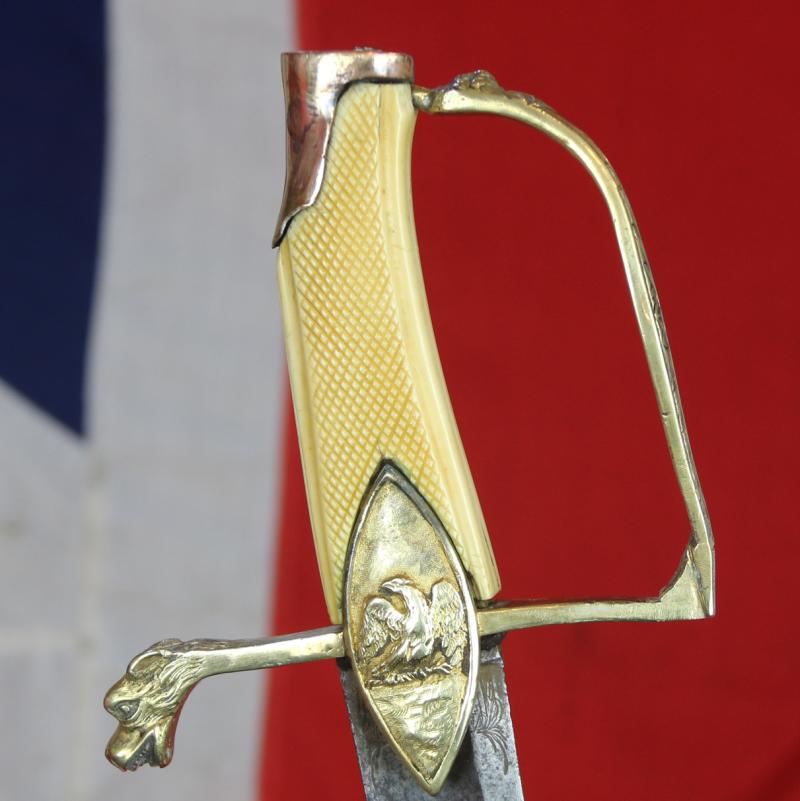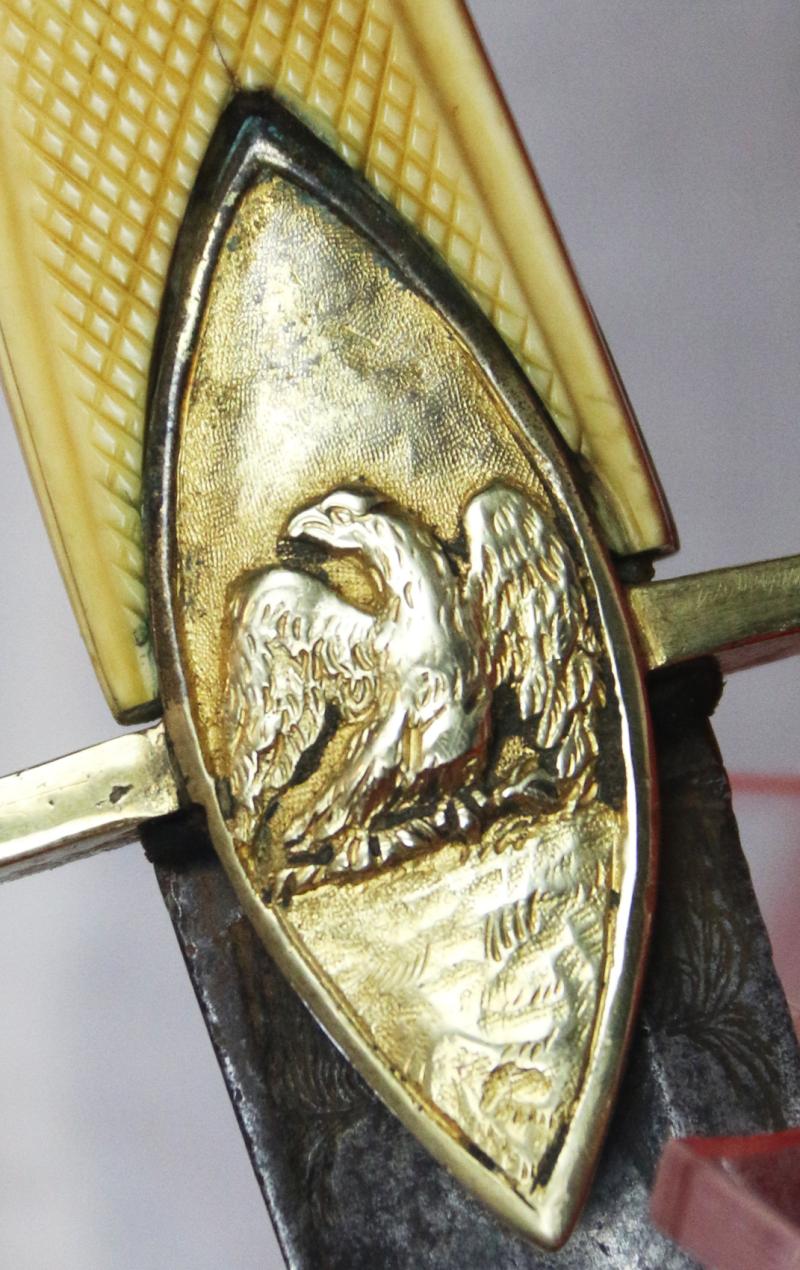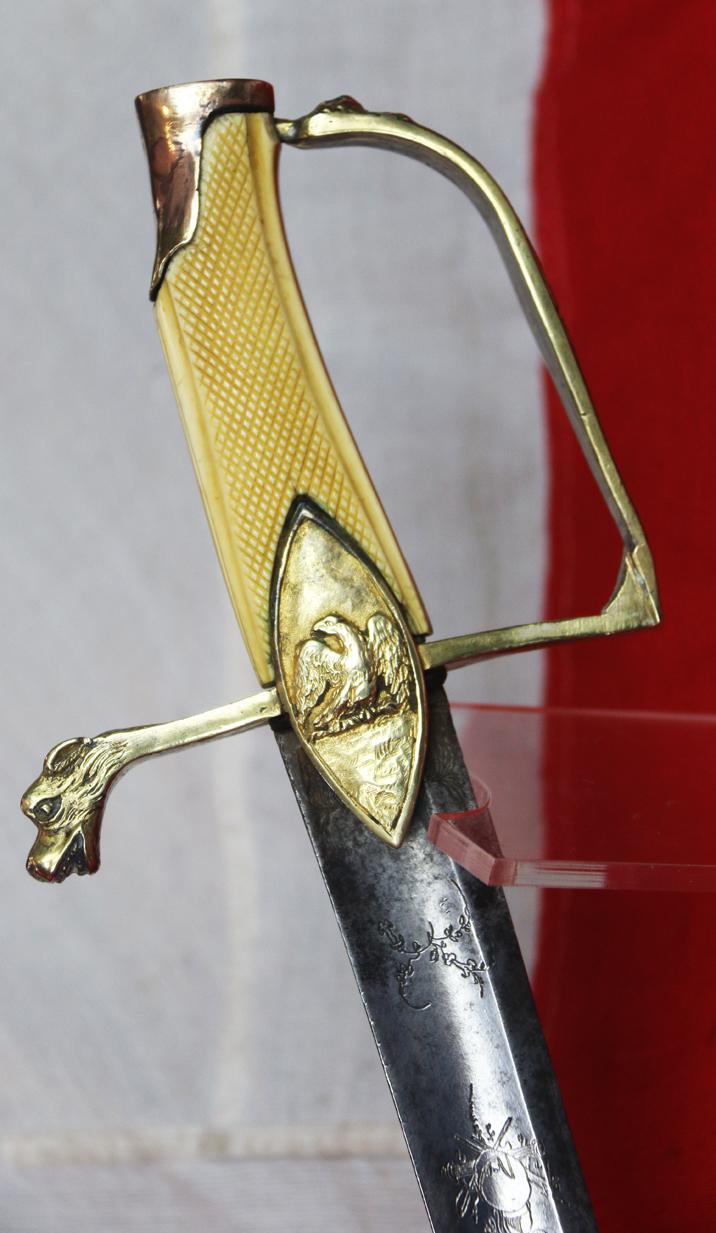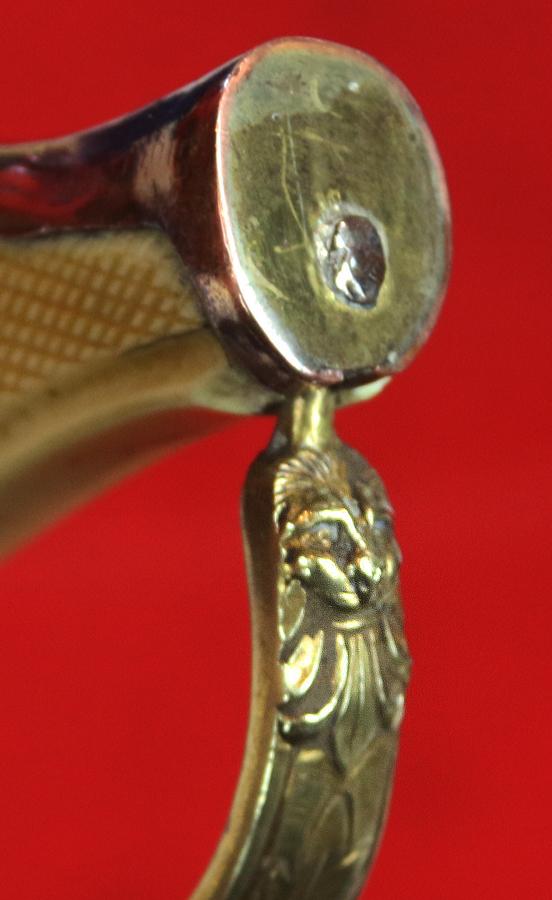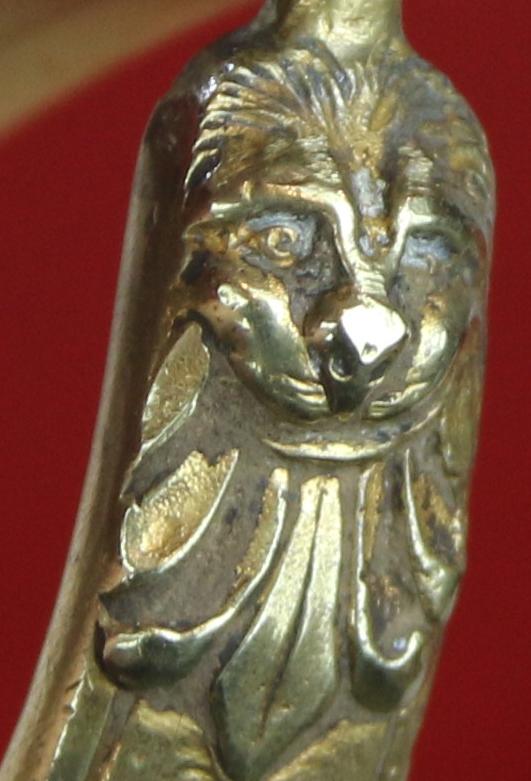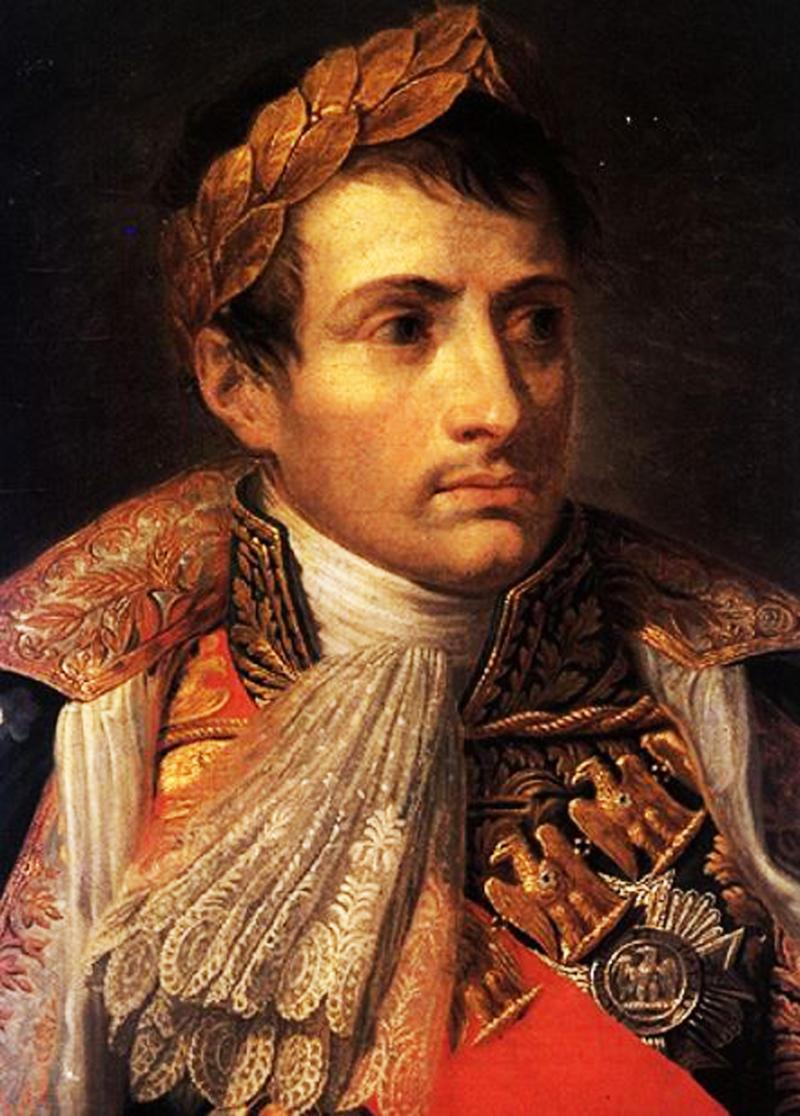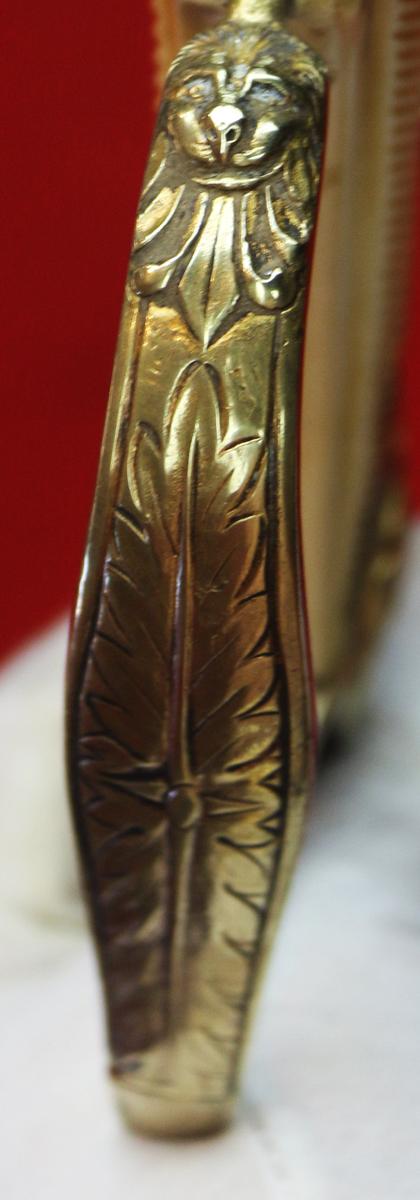A Most Rare 1800's French 1st Empire Napoleonic Sabre, Bearing the Napoleonic Imperial Eagle Hilt With Exotic Carved Grip
Napoleonic period swords with Napoleon's Imperial Eagle twin langets are very scarce indeed, but with a hand carved and chequered ivory hilt is beyond rare. Although frequently seen on British high ranking officer's swords of the period, it is simply never seen on the domestically made French swords of the same period, in fact in 50 years we cannot ever recall ever seeing one before, possibly not even in Les Invalides Musee D'Armee in Paris, and probably because France had little or no trade access to ivory from Africa and India. This sword must have been made for a most senior general officer or possibly even made to be a presented sword awarded by Napoleon. The sabre has almost all its original mercurial gilt present and remaining on the hilt, with wolf's head quillon, and a lion's head to the knuckle bow top at the pommel. The sword's copper gilt hilt pommel has been field repaired during its service life. Good blade with fine engraving of stands of arms, and florid scrolls etc. It has a maker's name engraved beneath the langet, of Ve. AK & F
The ideal Napoleonic battle was to manipulate the enemy into an unfavourable position through manoeuvre and deception, force him to commit his main forces and reserve to the main battle and then undertake an enveloping attack with uncommitted or reserve troops on the flank or rear. Such a surprise attack would either produce a devastating effect on morale, or force him to weaken his main battle line. Either way, the enemy's own impulsiveness began the process by which even a smaller French army could defeat the enemy's forces one by one.
After 1807, Napoleon's creation of a highly mobile, well-armed artillery force gave artillery usage increased tactical importance. Napoleon, rather than relying on infantry to wear away the enemy's defences, could now use massed artillery as a spearhead to pound a break in the enemy's line. Once that was achieved he sent in infantry and cavalry. The Napoleonic Wars brought radical changes to Europe, but the reactionary forces returned to power and tried to reverse some of them by restoring the Bourbon house on the French throne. Napoleon had succeeded in bringing most of Western Europe under one rule. In most European countries, subjugation in the French Empire brought with it many liberal features of the French Revolution including democracy, due process in courts, abolition of serfdom, reduction of the power of the Catholic Church, and a demand for constitutional limits on monarchs. The increasing voice of the middle classes with rising commerce and industry meant that restored European monarchs found it difficult to restore pre-revolutionary absolutism and had to retain many of the reforms enacted during Napoleon's rule. Institutional legacies remain to this day in the form of civil law, with clearly defined codes of law an enduring legacy of the Napoleonic Code.
While Napoleon is best known as a master strategist and charismatic presence on the battlefield, he was also a tactical innovator. He combined classic formations and tactics that had been used for thousands of years with more recent ones, such as Frederick the Great's "Oblique Order" (best illustrated at the Battle of Leuthen) and the "mob tactics" of the early Levée en masse armies of the Revolution. Napoleonic tactics and formations were highly fluid and flexible. In contrast, many of the Grande Armée's opponents were still wedded to a rigid system of "Linear" (or Line) tactics and formations, in which masses of infantry would simply line up and exchange vollies of fire, in an attempt to either blow the enemy from the field or outflank them. Due to the vulnerabilities of the line formations to flanking attacks, it was considered the highest form of military manoeuvre to outflank one's adversary. Armies would often retreat or even surrender if this was accomplished. Consequently, commanders who adhered to this system would place a great emphasis on flank security, often at the expense of a strong centre or reserve. Napoleon would frequently take full advantage of this linear mentality by feigning flank attacks or offering the enemy his own flank as "bait" (best illustrated at the Battle of Austerlitz and also later at Lützen), then throw his main effort against their centre, split their lines, and roll up their flanks. He always kept a strong reserve as well, mainly in the form of his Imperial Guard, which could deliver a "knockout blow" if the battle was going well or turn the tide if it was not. If we knew the name of the general officer to whom it was presented to or belonged, and with it's scabbard, it could likely be valued at ten times our asking price. Antique ivory, 'worked' declaration submission, and we can only sell this sword within the UK, it is not allowed for export. Ivory, however old cannot be imported into the USA.
No scabbard.
Code: 25322
2995.00 GBP



